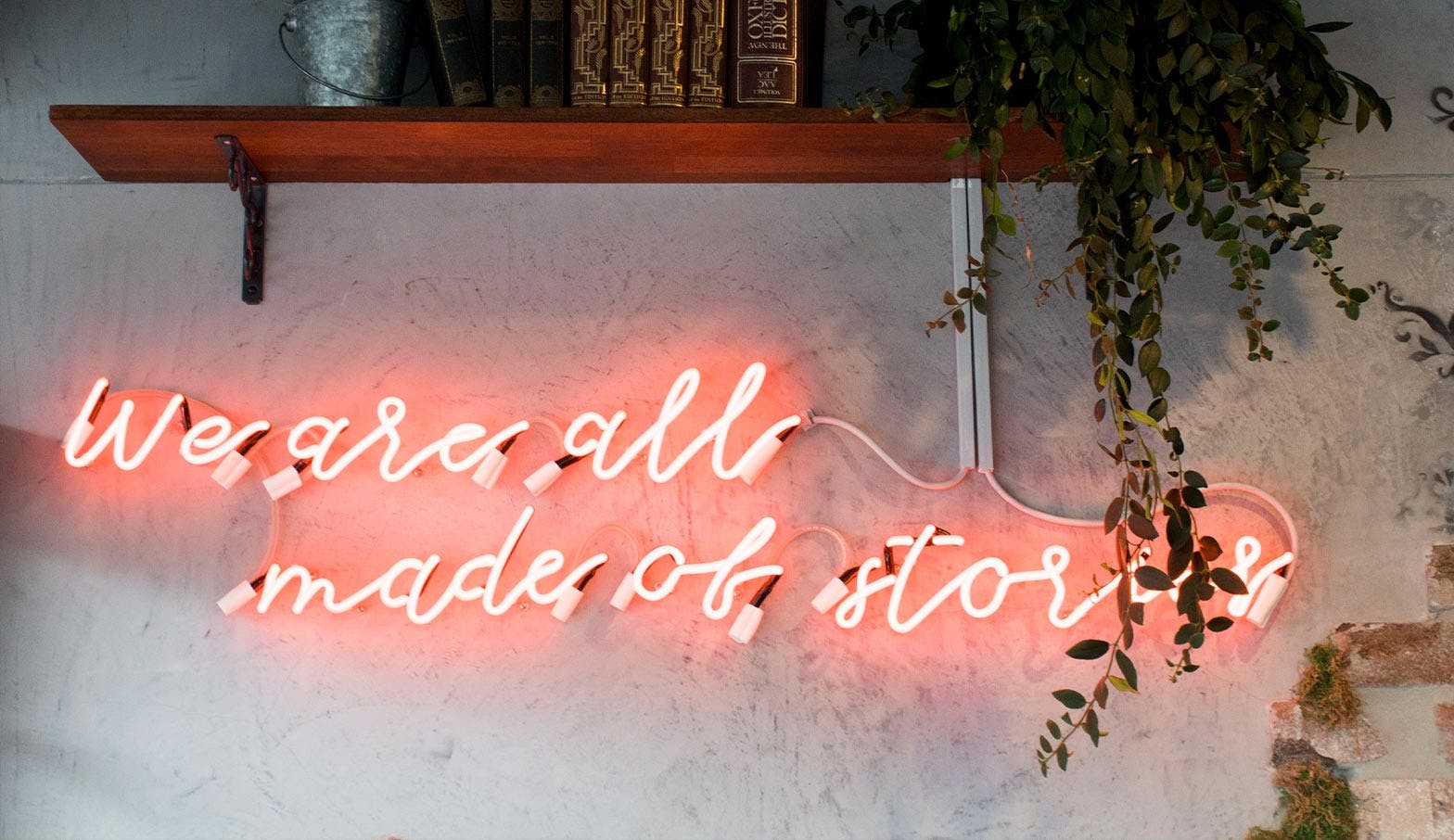A few weeks back, we shared with you five ways to tell your brand story. But the thing is, there are sooooo many more ways to approach brand storytelling. Since this topic gets us more excited than the kiddos on Christmas Eve and has the potential to turn your brand power up a zillion notches, we thought we’d dive back in with five more ways to up your brand story game. Ready, set…let’s go!
1. Find the hero of your story (hint, it’s not you)
When people think about telling the story of their business, they often want to share their history or origins or information about their team. Here’s the blunt truth. Most of your customers don’t care about these things. Unless there is something that relates to them, they don’t want to hear about the five different stages of growth your business went through to get where it is today. This is white noise to your audience. Detailing every etch on your historical timeline is a quick way to lose their interest. Fast.
The mistake that many businesses make when approaching their brand storytelling is that they make themselves the hero of the story. Repeat after us: it’s not about you.
Make your audience the hero. By doing this you’re immediately setting them up to find the protagonist of your story relatable. If you haven’t cottoned onto it yet, this means that you need to understand your target customer inside and out. Think in terms a lot deeper than just basic demographics. You want to get awkwardly personal. What kind of emotional fulfillment are they seeking? What do they care about? What do they feel strongly about? Go deep. And when you think you’ve gone deep enough, go deeper still.
2. Let your customers tell some of your story for you
The travel and hospitality industries were forever changed when Tripadvisor entered the picture. All of a sudden there was a centralised place for people to share their accommodation, tour and restaurant experiences with the world. And who doesn’t like to get a good recommendation? Or have a good rant when something isn’t up to scratch.
If you have a bunch of raving fans, let them help convince your potential buyers to join their herd. In his ground-breaking book, Influence: the psychology of persuasion, Robert B. Cialdini explains how we look to others to provide guidance when we are unsure about something. Called social proof, the more people who affirm a direction for us to take (having taken that direction themselves to great success), the more likely we will jump on board with it too. Use testimonials, reviews and case studies to your greatest advantage.
3. Know the beating heart of your brand
Know thyself. This linchpin of personal development is pretty darn important when approaching brand storytelling too. If you don’t truly understand your brand how can you expect anyone else to?
Who are you? What do you stand for? What are you trying to achieve? If you can’t answer these questions you need to go back to basics and identify the core principles of your brand (as in your mission, values, vision and purpose). This, of course, is only the first step. Once you’re clear you then have to articulate it with things like your tagline, value proposition and USP.
4. Keep it simple
Brand storytelling is less like a complex spy thriller and more like a Mills and Boon novel—without the soppy romance. Mills and Boon stories follow a simple formula that is easy to digest and somewhat predictable. Sure, you absolutely want your brand story to be unique. But you don’t want it to be complicated or confusing.
All good stories have a beginning, a middle and an ending. There is always some kind of conflict and then a resolution. If you make your target customer the hero of your story as discussed in the first point, the conflict becomes a problem they are facing and the resolution is how your brand solves that problem for them. Simple as that.
5. Be authentic
Have you ever clicked on a link with a juicy heading that sounded super enticing only to find yourself on a page that has nothing to do with the title at all? Clickbait headlines are not only dishonest, they’re super annoying. No one likes to be manipulated and when it comes to telling the story of your brand, if you’re not authentic, people won’t buy what you’re selling.
Authentic doesn’t have to dull though. You can still be clever about it. Simply remember that, whether you choose a brand voice that is bold and cocky, authoritative and educational or offbeat and quirky, it needs to be an authentic fit for your brand.
